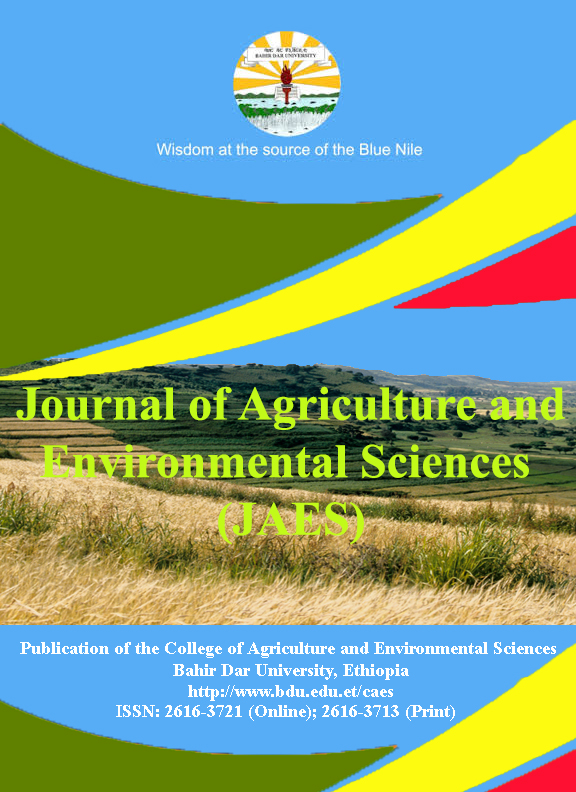Heritability, Genetic Advance and Gene Action Determination for Seed Yield and Yield Components Using Generations of Finger Millet [Eleusine coracana(L.) Gaertn]
Keywords:
Additive variance, Epistasis, Genetic variability, Polygene
Abstract
Finger millet (Eleusine coracana (L.)Gaertn.) is a small seed crop grown in low rainfall areas and its diverse cultural conditions make it an important food security crop; however, its productivity is low in Ethiopia. This research was done to estimate heritability and gene numbers for yield and yield components in parental, filial and backcross generations derived from a cross of two-finger millet cultivars at Koga and Adet Agricultural Research Centers, Northwestern Ethiopia in 2014/15. The experiment comprised six basic generations and four reciprocals of finger millet evaluated in randomized complete block design with two replications. Data on yield and yield component traits were recorded. The result showed the number of genes estimated in both locations ranged from-0.23 to 88.78, indicating that the presence of many genes with small cumulative effect and epistasis gene effect will bias an estimate of the number of genes. Medium to high narrow-sense heritability value coupled with high genetic advance showed the influence of additive variance and ease of improvement for biomass yield and number of ears in this population. While low, medium and high narrow-sense heritability observed together with the low genetic gain in most traits; which showed the presence of small additive variance in most traits with the influence of epistasis; hence intensive selection is required to exploit the characters. In most traits, the number of genes estimated to be negative and/or very small indicates that epistasis was significant and the existence of environmental effect in both locations. The results indicate the presence of genetic variability for developing improved varieties through crossing and selection.Downloads
Download data is not yet available.
